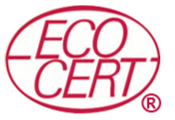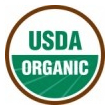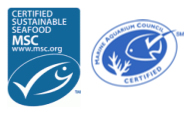 Even during a tough economy, 68% of Americans want to buy products that are healthier for them and for the environment. They also want to buy from companies who are socially and economically responsible. So what’s a regular person who doesn’t know how to read the small print do? Can we trust the many labels that we’re beginning to see? Ultimately, we want proof that the company in question is doing what they say they are, before we fork out our hard-earned dollars.
Even during a tough economy, 68% of Americans want to buy products that are healthier for them and for the environment. They also want to buy from companies who are socially and economically responsible. So what’s a regular person who doesn’t know how to read the small print do? Can we trust the many labels that we’re beginning to see? Ultimately, we want proof that the company in question is doing what they say they are, before we fork out our hard-earned dollars.
 COSMETICS
COSMETICS
This is the only organic certification in America for color cosmetics. The USDA organic certification is only for food products and so has no jurisdiction over cosmetics.
SKINCARE
Read you’re the ingredient list carefully, especially if there’s a paragraph, as opposed to 2 lines of ingredients! Most products, if eco-friendly, may contain up to certain percentage of organic ingredients – they have to clearly state this percentage.
Don’t be misled by:
“Organic” Skin Cream: it may only contain 1 or 2 organic ingredients and lot of other toxic ingredients.
Natural: means very little when it comes to skincare.
Made with Botanicals or Botanical Ingredients: means very little.
SKINCARE INGREDIENTS THAT YOU WANT TO AVOID
The chemical nasties you’re looking for when it comes to preservatives include:
Parabens (Propyl, Methyl, Butyl, or Ethyl): Parabens are used as preservatives in numerous skin care and hair care products. They are highly toxic as they release Formaldehyde when exposed to the air and cause allergic and skin reactions.
There’s a whole host of other chemical nasties to avoid if you’re concerned about your health, and the health of your family. Several of these ingredients are now considered a cancer risk, especially breast cancer. More and more research is being done so that in the future they can have them banned from skincare.
Propylene Glycol: Propylene glycol is obtained from petrochemicals and is added in numerous skin care creams and lotions as an emulsifying agent. It makes the skin look smooth; however, it speeds up aging of the skin. It also causes irritation and contact dermatitis.
Sodium Lauryl Sulfate (SLS): SLS acts as a surfactant, degreaser, and emulsifier and is used in numerous foaming personal care products such as soaps, shampoos, body wash products, face cleansers, shaving cream, etc. This detergent affects the eyes and delays their healing time. It can be absorbed by the skin surface and gets accumulated in your body organs. When used in products containing nitrogen-based raw materials, it forms carcinogenic nitrates, which are known to cause irritation to the eye and skin.
Fragrance/Parfum: Artificial fragrance can cause numerous health problems including headaches, lung problems, skin irritation and dizziness.
Mineral Oil: Mineral oils are obtained from petroleum products and can cause skin irritations. They block skin pores, which restricts movement of nutrients and waste matter from the cells.
Imidazolidinyl and Diazolidinyl Urea: These are also used as preservatives and are known for causing contact dermatitis.
Ingredients with PEG in the name: Polyethylene Glycol is their extended name; they should be avoided in cleansers for your skin and hair, as independent testing has shown they can be contaminated with 1,4-Dioxane; a petroleum-derived carcinogenic compound that is also used in dry cleaning solvents, lacquers and automotive coolant.
Synthetic Colours: Synthetic colours can cause allergic skin reactions.
Triethanolamine (TEA): TEA is used to adjust the pH of the cosmetics. It causes various allergic reactions including eye problems, and dryness of hair and skin. Also look out for MEA and DEA for the same reasons.
Packaging is the final element for consideration for natural and organic skincare. Certified organic skincare can contain only natural ingredients so it’s incredibly important to stop bacterial growth, by keeping air from getting into the packaging. Some skincare companies have again spent a fortune in research and development to ensure that their super effective ingredients maintain their integrity for the life of the product. It should also be noted here that the time between starting and discarding most organic and natural skincare should only be about 9 to 12 months. A product you love to use probably wouldn’t last you that long anyway.
 FOOD
FOOD
I could write a book on food labeling (Actually I have! Labeling is discussed in great detail in The Gorgeously Green Diet), however, for the simplicity’s sake, look out for the following:
If any food product carries this stamp, it’s third party verified and means that it is organic, and not genetically modified.
PRODUCE
The sticky labels on produce will tell you an awful lot. The most important thing to know is this:
 If the 4 digit # begins with a 4, it’s not organic
If the 4 digit # begins with a 4, it’s not organic
If the 4 digit # begins with an 8 it’s genetically modified
If the 4 digit # begins with a 9, it’s organic
Remember:
4 is a bore
8 we hate
9 is fine
Product of U.S.A.
New federal labeling laws require markets to state the country of origin of any fresh vegetable, fruit, nut, meat, or fish. Try to buy U.S. products: Foreign produce has been trucked and flown thousands of miles—and was grown to be trucked and flown thousands of miles, not to be as delicious as possible.
If the produce or meat comes from your home state, it’s more likely to be fresher and to have traveled fewer miles.
Natural
Doesn’t mean much, particularly for meat. This indicates that the food contains no artificial ingredients or colors, but it’s no guarantee that the animal was treated humanely or that its diet was strictly organic.
Free Range
Sounds more bucolic than it is. Free-range chickens are given “access” to the outdoors, but they still tend to stay inside an overcrowded and dirty pen.
Certified Humane Raised and Handled
A new type of certification from a nonprofit organization that works to improve the welfare of livestock from birth to slaughter.
Fair Trade Certified
Often found on coffee, chocolate, rice, and other imported foods. Certification requires companies to pay fair prices to farmers and producers who treat their workers well and cultivate their land in a sustainable way. Go to transfairusa.org for more information.
FISH
Here are 2 great labels to look for when you’re shopping for fish.
PAPER
Look for recycled paper products. Here’s my rating system:
1: Made from recycled paper: light green
2.Made from 100% recycled paper: bright green
3. Made from 100% post-consumer content*: deep green
*The higher the post-consumer content percentage, the better.
 WOOD
WOOD
If you’re buying any wood products, look for this lablel:
This means that the wood has been sustainably harvested by the Forest Stewardship council.


Pingback: Mother Earth | What will you do tomorrow? » ginacristinephotography.com